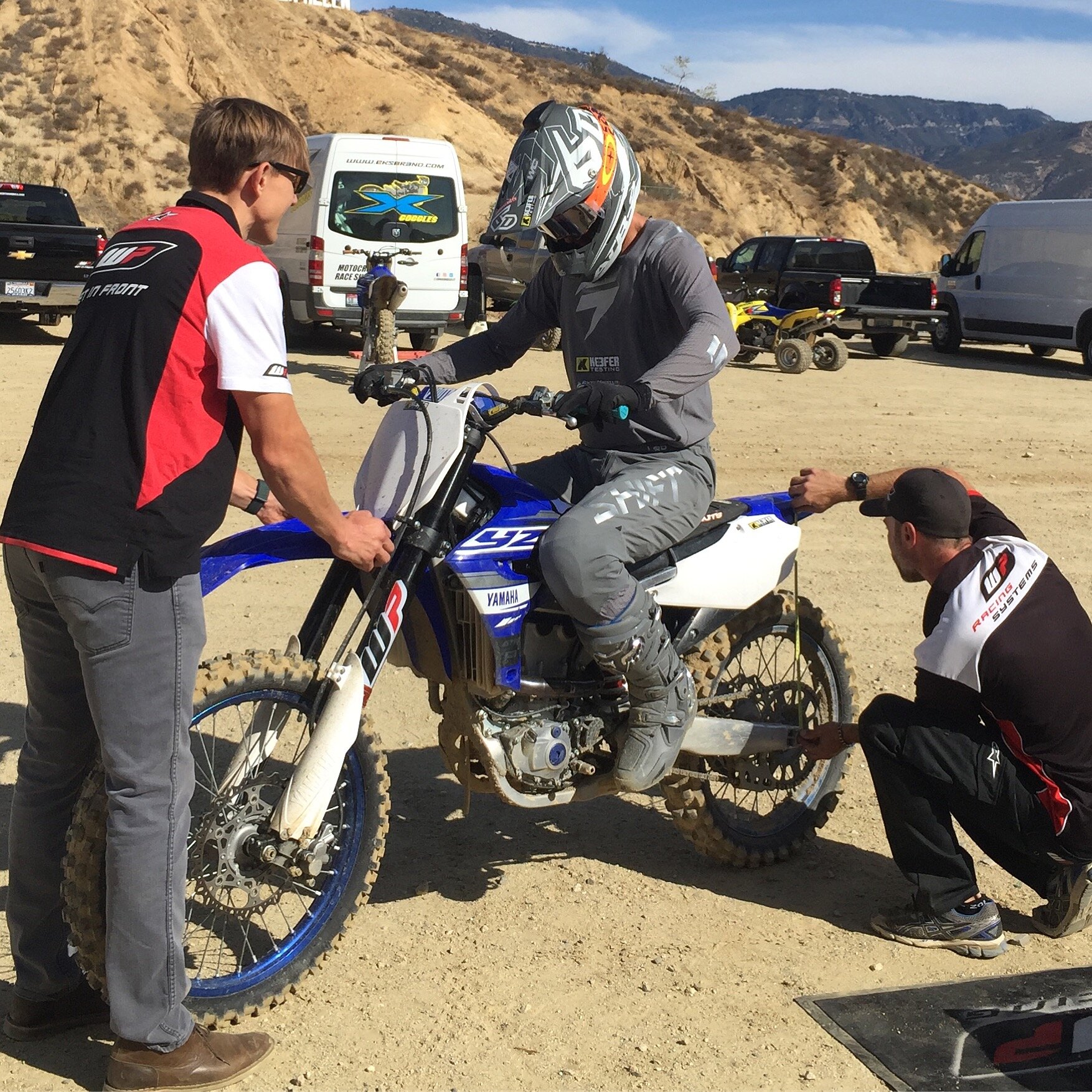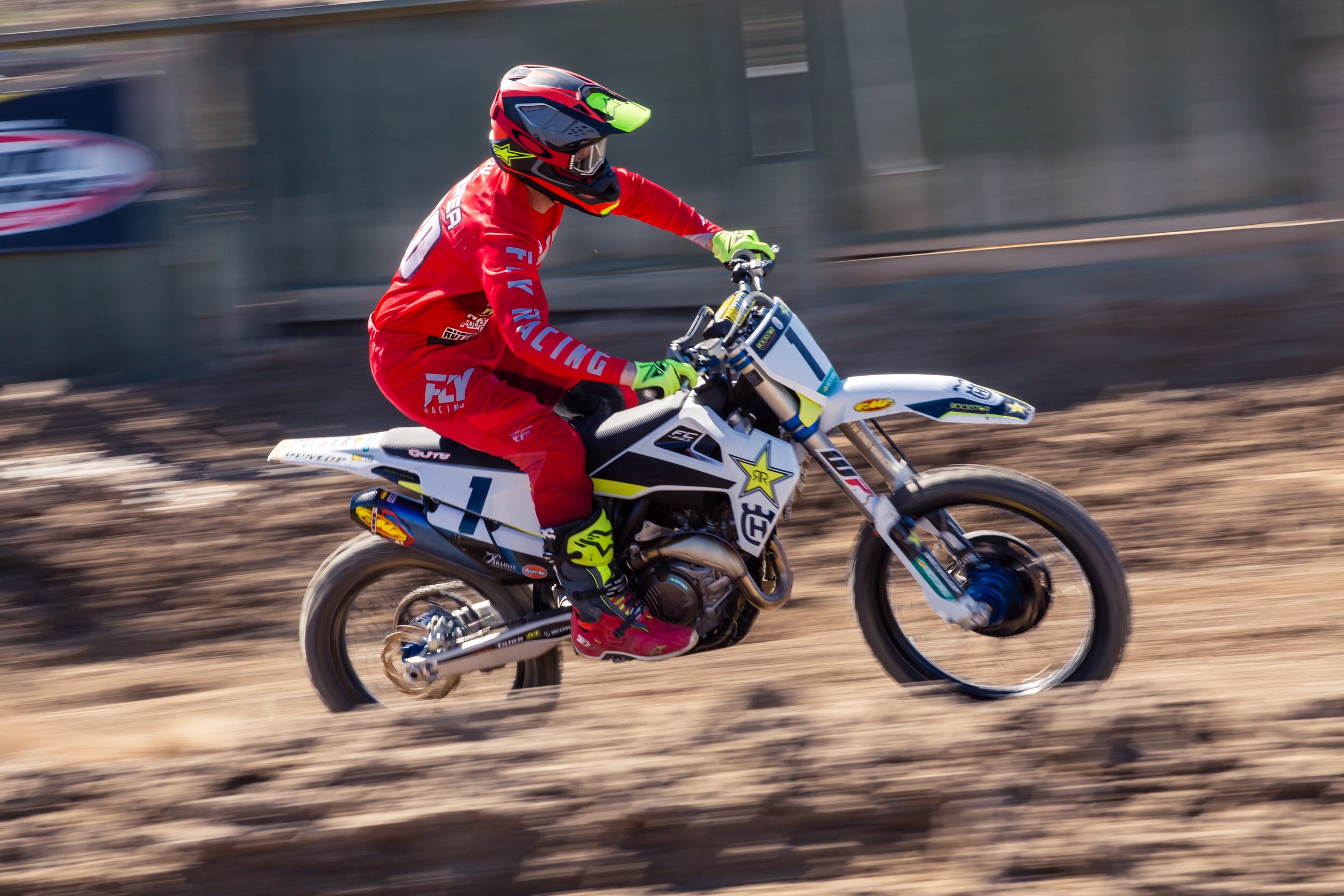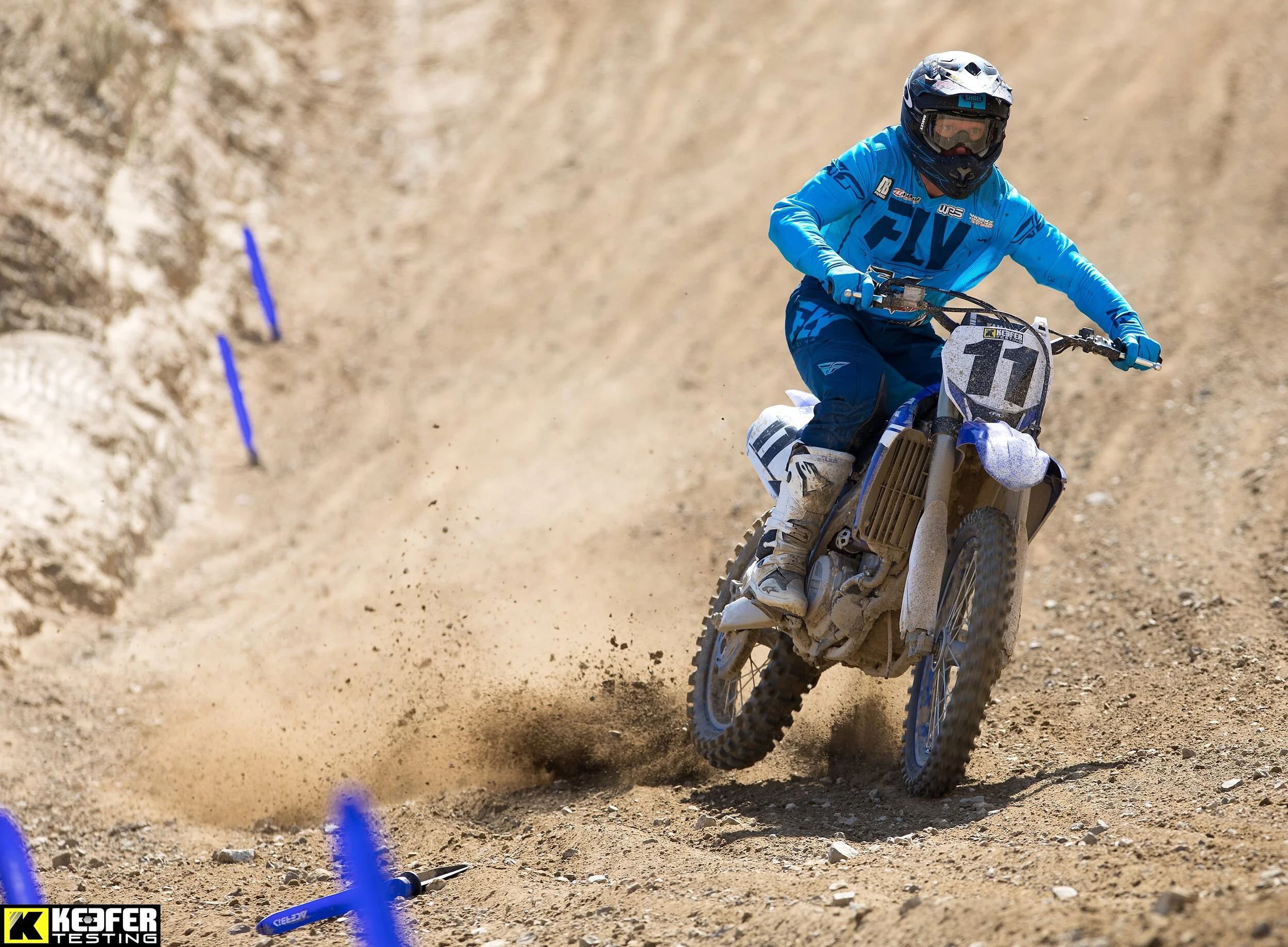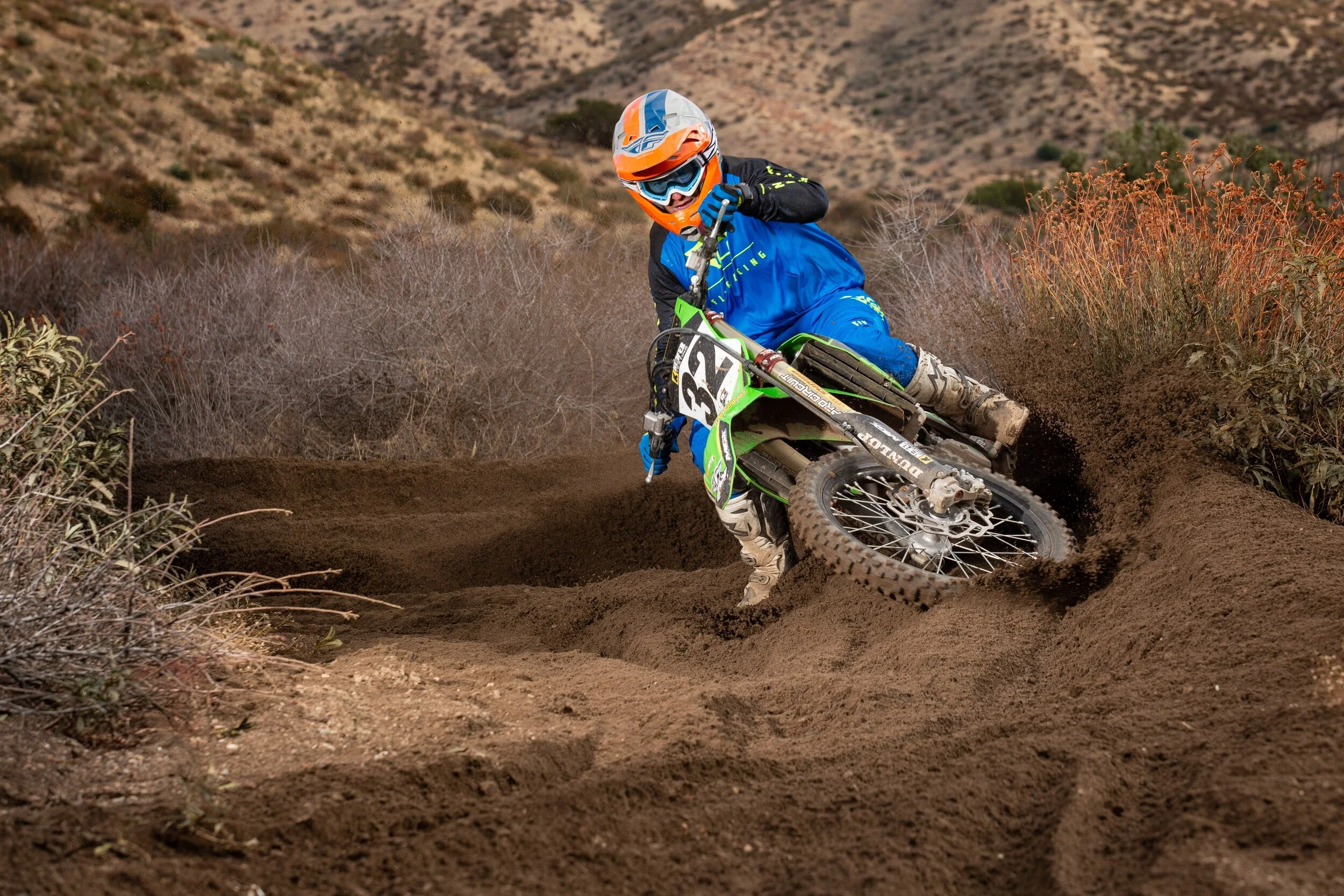Since we are in some weird times right now with this quarantine stuff, I thought it could be cool to learn a little about what each testing term means. What better way to get more in tune with your motorcycle than learning what the definition is to each term. If you listen to the Keefer Tested Podcast or read anything here on keeferinctesting.com you will hear/see these testing terms being used. Some of you have emailed me and asked what the hell some of these terms mean, so below is your template on what each means. Hopefully you can use these to your advantage next time you are talking about your machine or need to get a certain point across to your suspension/chassis tuner.
Pitching: This word is used when the rider lets off the throttle and the weight of the motorcycle forces the front end down. This usually happens when there is a lot of engine braking or the fork is too soft. The 2018 YZ450F was notorious for having a lot of this pitching when coming into a corner. Pitching can upset the chassis balance and can cause some oversteer through area 1 and 2 of corners. Pitching can also mean that a certain bike can squat (shock) too much under throttle out of corners causing the bike to have too much movement fore and aft. Pitching can make the machine seem unstable and cause the rider to not set up properly for corners.
Hold Up: Hold up is mostly used when the fork or shock is riding too low in the stroke. When a rider is asking for more hold up he is usually wanting a stiffer compression setting so the fork or shock isn't “blowing through”.
Harsh: This term has got to be the worst feeling to a rider. A harsh feeling is when the suspension is either too soft or too stiff. Yes, it can actually be both! If the suspension is too stiff the rider will complain about a harsh or firm feel through the handlebars. This stiff/harsh feel is caused by the suspension not being able to use all of its stroke. If the harsh feel is coming from the stiff side, opening the compression or the rebound can help alleviate some of this feeling. If the harsh feeling is coming from a soft sensation it’s because the suspension is riding too low in the stroke. Riding too low in the stroke can cause a harsh feeling because you are now in the mid stroke where the valving starts to ramp up to get stiffer. By stiffening the suspension a little you are now stiffening the initial part of the stroke which can actually make your bike feel plusher because your machine is riding higher up in the stroke around the track. “Harsh” is a tricky term because the cause of the harsh feeling can be from a too soft or too stiff of a setting.
Plush: I have never been a huge fan of this term, but the word plush means soft or supple feeling. If I hit something at speed most riders want their bike to feel plush and not harsh. However be careful when using this term to suspension techs as they may want to set your suspension up too soft. Plush can also mean the same with frame feel. For example, the KX450 has a plusher feeling to its frame than the of the Honda CRF450R. I like to use the term “bump absorption” more than the word plush. When the Kawasaki KX450 hits a certain square edge at speed, it has a better bump absorption feel than the Honda CRF450R. Off-road riders look for that plush feeling because they have less jumps to deal with and can hit roots/bumps at higher speeds. A softer compression setting or a faster rebound setting usually leads to a plusher feel.
Crust: We can thank air forks for this term. I came up with this term when I was at home during thanksgiving and I was watching my wife make a french apple pie. I always liked the middle of the pie more than the crust, so it immediately made me think of air forks. In order to get to the gooey goodness of the pie, I have to break through the crust right? Well air forks are the same thing! The top of the stroke of almost any air fork is called the crust because it’s usually has a hard/harsh feel initially and then you have some comfort. The crust usually gives you some deflection and a harsh feeling through the handlebars on small chop. We use the word crust because air forks usually feel like you have to break through the stiff portion of the travel in order to get to the softer/more forgiving portion of the stroke. WP has improved the air fork feel over the years so let's hope they continue down the path of a less crusty initial stroke on their air forks.
Empty: This term can be used when talking about engine character or suspension feel. When talking suspension empty usually means there is not a lot of damping feel. If you say “I feel like my end stroke is empty”, it means that it blows through or simply doesn't have any damping feel.
Rigidity Balance: Rigidity balance is an important term when testing any chassis. If the bike has a firm feel and its rigidity balance is too firm it could mean that it corners excellent, but feels very harsh and has deflection on rough/fast straights. If the rigidity balance is too soft the bike can have a wallow feeling when under throttle as well as give the rider less confidence on braking bumps because of its unpredictable feel. Rigidity balance is something that every manufacturer works a lot on when developing their machine. A bike has to corner with precision, but also have enough comfort in order to have good bump absorption. A machine that has great rigidity balance is a Kawasaki KX450 because it turns well and can hit bumps at speed with a consistent feel.
Performance: Performance is a word we used in the testing world when a rider is looking to ride at a higher level as well as be able to push the motorcycle without having it be too soft. Getting a chassis or suspension package to have better performance is basically asking the tuner that you understand that you’ll sacrifice some comfort, in order to get a machine that you can slam into obstacles harder without getting blow through. Usually riders that are faster or heavier want a performance based setting so they can hit jumps as well as bumps at a faster rate.
Comfort: A comfort setting is something most vet riders want so they don’t feel every little bump on the track. A comfort setting usually involves a softer setting that moves more in the stroke, but also can bottom out when hitting bigger jumps or larger bumps at speed. The 2020 YZ450F’s suspension package is a great example of blending both performance and comfort together.
Blow Through: This usually happens when hitting bumps/jumps hard and the suspension just dives without much damping force feel. If your suspension feels like it’s blowing through then you need to try and get a stiffer setting through clickers or internally with valving.
Vague: Vague is usually a term used by describing front wheel traction. Front wheel lean angle traction can feel vague when the fork setting is too stiff, have the wrong offset triple clamps, or if you have the wrong compound front tire. A vague feel means that you will be washing your front tire out under lean angle and the bike may have less of a contact patch. Running too much air in your tire can also give you a vague feel.
Damping Feel: Damping feel or force is the feeling of the suspension when moving down. Damping feel is used when explaining to tuners that you either have a soft feeling and need more of a stiffer setting. Damping feel can also be helpful/used when asked if the action of the suspension is too fast or too slow.
Deflection: Deflection happens when either a suspension setting is too stiff or a chassis setting is too rigid. Deflection happens when your front or rear end hits a bump/square edge and your bike simply doesn't absorb it. It’s like a pinball bouncing around from some side to side and can cause you to roll the throttle off in a hurry. Deflection also causes you to have less contact patch and makes the bike feel less planted. Going to a softer setting with the suspension or chassis usually alleviates some of this feeling.
Contact Patch: Contact patch is a feeling of how much tire is felt underneath you. Contact patch can be increased by running less air pressure in your tires, running a softer suspension setting, chassis setting and/or increasing/decreasing offset. I like using this term a lot with my evaluations because without the feeling of a wide contact patch it will feel like you are running bicycle tires on your dirt bike. Having a wide contact patch feel gives you more confidence to roll the throttle on sooner when exiting corners.









